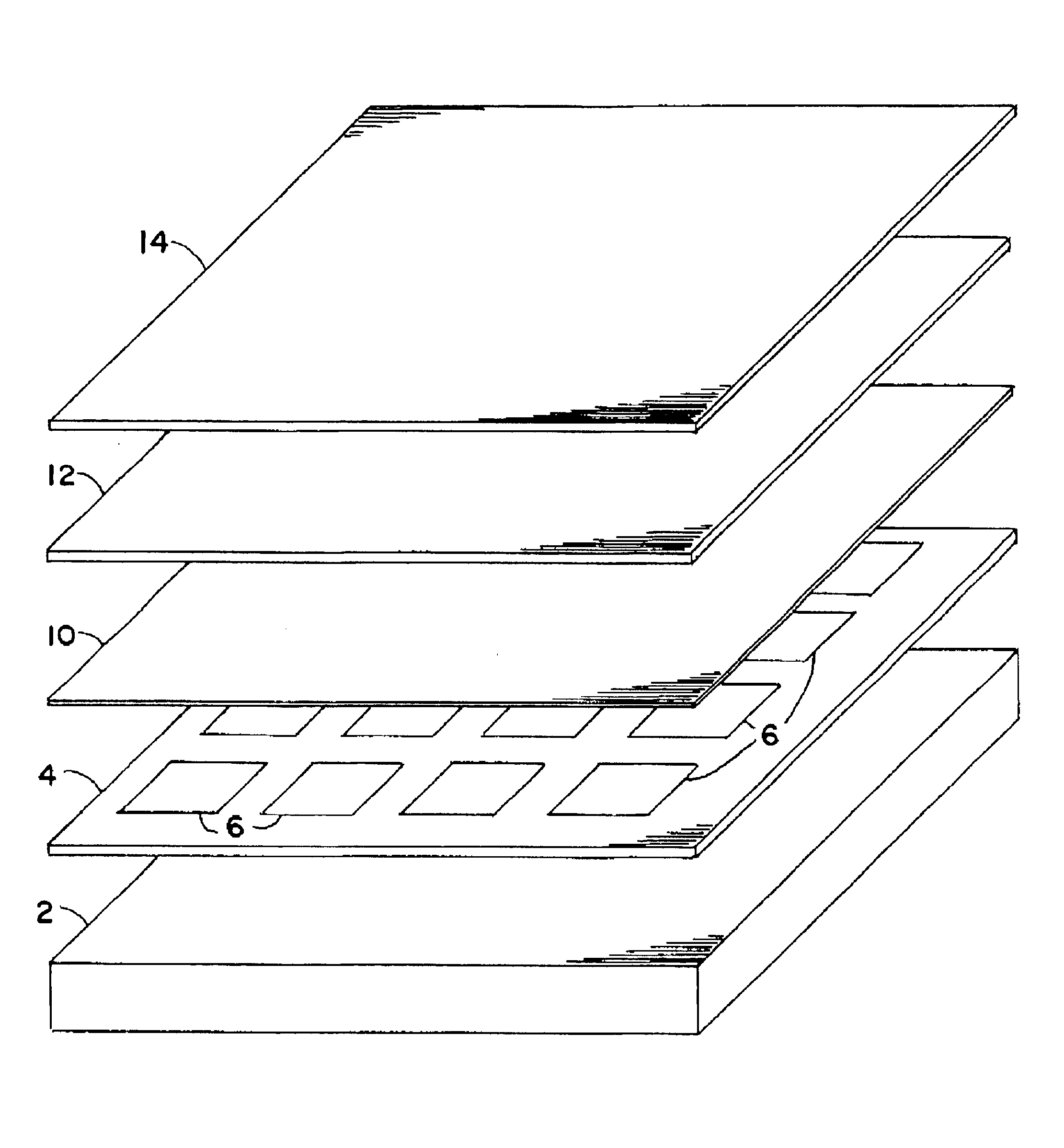Solar cell modules with improved backskin
a technology of solar cells and backskin, applied in the field of solar cell modules, can solve the problems of further degradation, reduced power output and/or the useful life of modules made with this kind of backskin material, and discoloration and getting darker. achieve the effect of high dielectric strength and extend the useful life of modules
- Summary
- Abstract
- Description
- Claims
- Application Information
AI Technical Summary
Benefits of technology
Problems solved by technology
Method used
Image
Examples
Embodiment Construction
sheet of tempered solar grade. CeO-free glass, having a thickness of 3 / 16 inch, is placed face down on a supporting surface. The upwardly facing surface of the glass sheet has been primed with SILQUEST A1100, an amino silane product of OSI Specialties of South Charleston, W. Va. 25303. Two 0.010 inch thick corona-treated sheets of 1705 zinc based ionomer, modified with 0.30% CHIMASORB 944 (a UV light stabilizer) and 0.30% TINUVIN 328 (a UV light absorber), are placed over the top surface of the glass sheet. An array of inter-connected silicon solar cells made from rectangular polycrystalline EFG-grown wafers is placed on top of the two sheets, with the front contacts of the cells facing the glass sheet. The wafers comprise p-n junctions formed by doping. The conductors interconnecting the solar cells have been soldered to the front and back contacts of the cells using a tin / silver solder and an acidic carboxylate flux. The ionomer sheets are oriented so that the corona-treated surfa...
PUM
| Property | Measurement | Unit |
|---|---|---|
| melting point | aaaaa | aaaaa |
| temperature | aaaaa | aaaaa |
| pressure | aaaaa | aaaaa |
Abstract
Description
Claims
Application Information
 Login to View More
Login to View More - R&D
- Intellectual Property
- Life Sciences
- Materials
- Tech Scout
- Unparalleled Data Quality
- Higher Quality Content
- 60% Fewer Hallucinations
Browse by: Latest US Patents, China's latest patents, Technical Efficacy Thesaurus, Application Domain, Technology Topic, Popular Technical Reports.
© 2025 PatSnap. All rights reserved.Legal|Privacy policy|Modern Slavery Act Transparency Statement|Sitemap|About US| Contact US: help@patsnap.com


